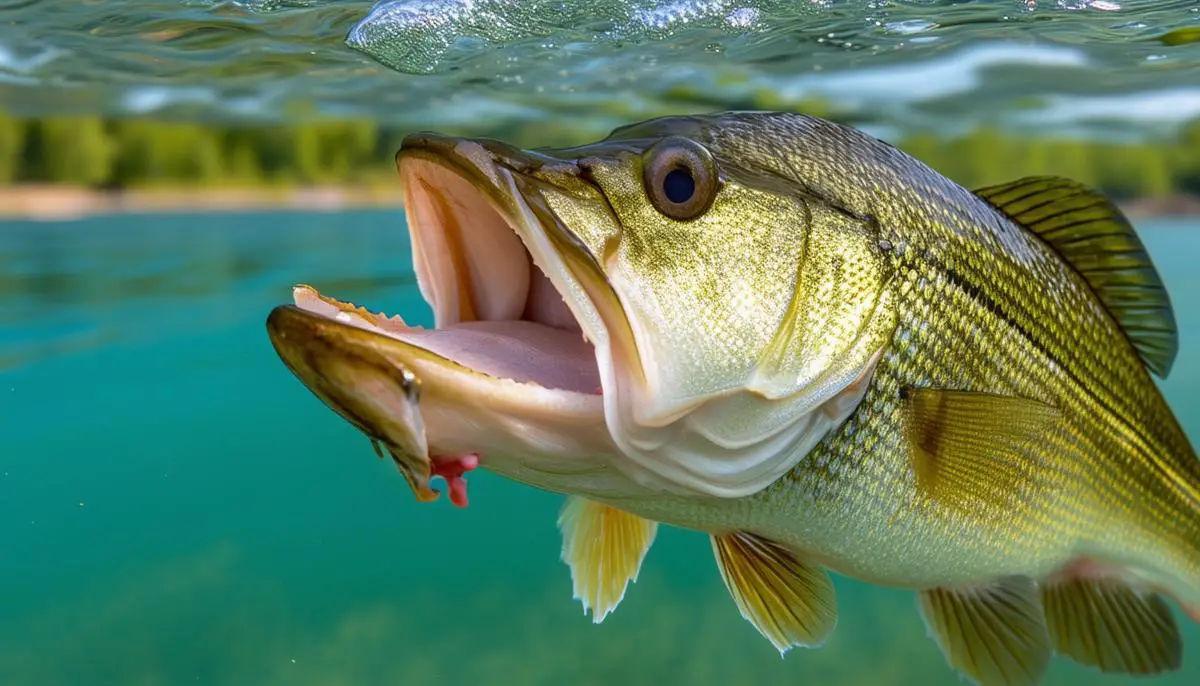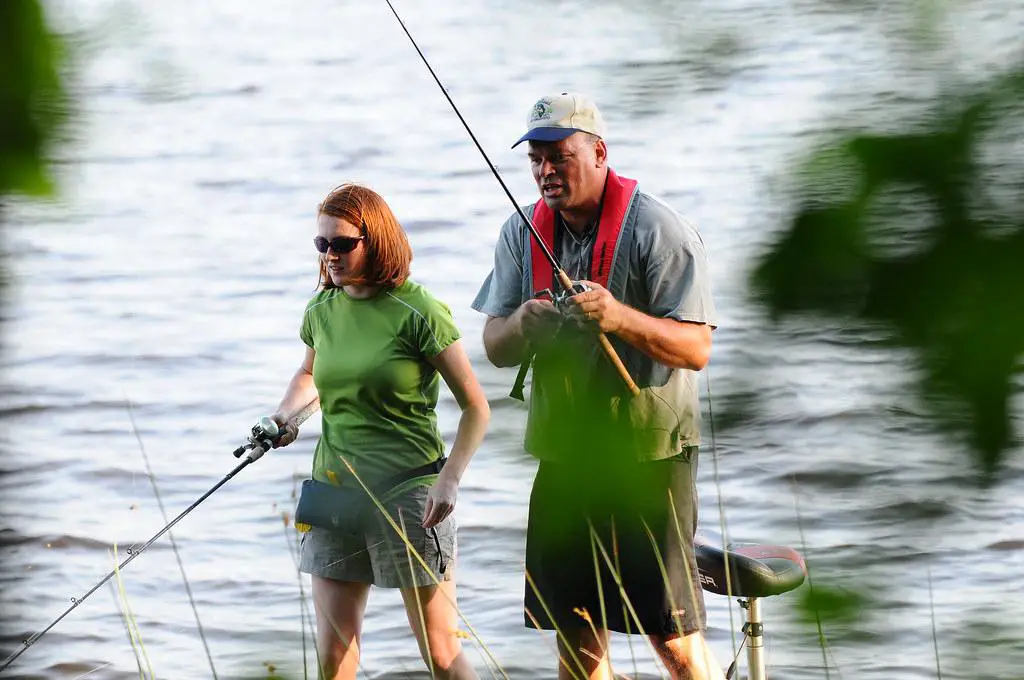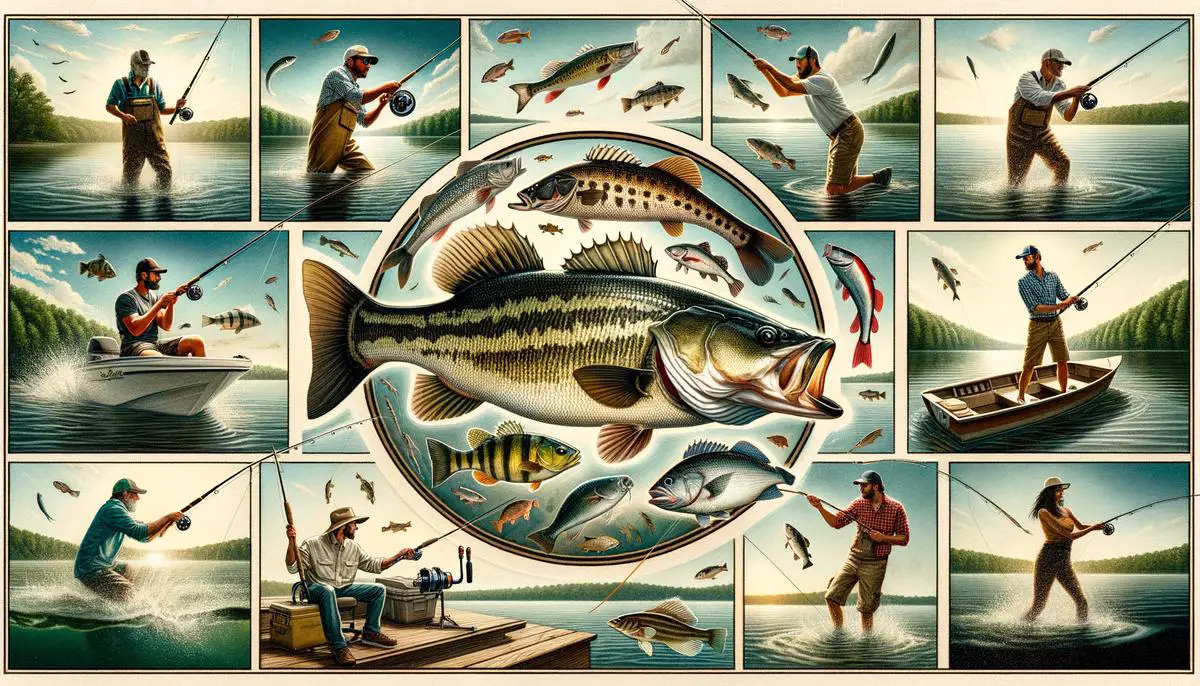Overview of Lake Lanier's Fish Species
Lake Lanier hosts a diverse array of fish, making it an excellent location for anglers. The lake's main attraction is its assortment of bass species, each with distinct characteristics and popularity.
Largemouth Bass
Known for their aggressive behavior and size, largemouth bass are a favorite. Identified by their large mouths, extending beyond the eyes, these fish love hiding in vegetation, fallen trees, and under docks. They reach impressive sizes, with the lake record at 17 lbs. 9 oz. Anglers appreciate largemouth bass for their fight, striking at spinners, crankbaits, and soft plastics.
Spotted Bass
Spotted bass are often confused with their largemouth relatives but differ in habitat and size. They thrive in deeper waters, away from dense cover, often around rocky terrains or drop-offs in the lower portions of Lake Lanier. Spotted bass display rows of black spots on their lower sides, and their dorsal fin is fully connected, unlike the largemouth's. Although smaller, typically not exceeding 24 inches, the Georgia record at 8 lbs. 5 oz hails from this lake. Their spirited nature and the challenge they present make them a favorite.
Striped Bass
Striped bass, or "stripers," are open-water predators, known for their powerful fights. These fish, recognized by their dark gray unbroken stripes along silvery sides, can grow remarkably large, with records of 79 inches and over 50 lbs.1 Lake Lanier's best was a 47-pound giant. Stripers follow schools of shad, their primary food source, moving deeper in warm months and shallower during cooler periods. Anglers employ large spinners, bucktails, and topwaters, adjusting to the depth and season accordingly.
Catfish
Channel catfish dominate both in numbers and size, with Lake Lanier's best reaching over 40 lbs. Light to blue-gray in color with scattered spots, they prefer deep, sand or rock-bottomed areas. Popular baits include liver, nightcrawlers, and stinky cheese balls. Flathead catfish, another species present, hit 50 lbs. The method varies, from bobber fishing to bottom rigs, depending on the targeted type and time of day.
Crappie
Black crappie, or "papermouths," for their delicate mouths, are highly prized for their tasty flesh. They exhibit high backs with black spots that scatter elegantly over their silver bodies. These fish, seldom over 3 lbs., prefer clear waters with brush piles or submerged timber. Live minnows, small jigs, and inline spinners are go-to choices, drawing both novice and seasoned anglers.
Lake Lanier's waters offer a spectrum of fish, ensuring that anglers never leave disappointed.

Fishing Techniques and Best Practices
Spinning and baitcasting are popular techniques for targeting bass in Lake Lanier.
Spinning
Spinning setups, equipped with lighter, more sensitive rods and reels, are ideal for fishing smaller lures or live baits. Light-action rods paired with 6-8 lb test lines give you the finesse needed to present artificial lures such as plastic worms, crankbaits, and spinnerbaits effectively.
Baitcasting
On the other hand, baitcasting gear is favored for its precision and control when casting heavier lures like jigs, jerkbaits, and larger soft plastics. Anglers often use medium to heavy-action rods with 10-20 lb test lines to tackle the fight and reduce the chances of line breaks.
Trolling
Trolling is a highly effective method for targeting species like striped bass. This involves dragging lures or bait behind a moving boat. Anglers typically use downriggers or heavy weights to control depths, especially during summer when stripers lurk deeper. Popular trolling lures include large swimbaits, bucktails, and spoons, often mimicking shad to attract these predators. Planer boards help in covering wider areas and keeping the bait at optimal depths.
Fly Fishing
Fly fishing, though less conventional in reservoirs, offers a unique challenge and rewarding experience, particularly for bass. Anglers use 7-8 weight fly rods with intermediate or sinking lines, casting streamers resembling shad near structures like submerged timber and docks. This method requires skill and patience but can lead to memorable catches of largemouth and spotted bass.
Jigging
Jigging is particularly productive for crappie and walleye. Anglers drop weighted lures (jigs) directly into the fish's habitat, then employ a vertical motion to mimic prey. Light spinning rods with 4-8 lb test lines are suitable, along with small jigs tipped with soft plastics or live minnows. This technique is deadly around brush piles, submerged timber, and drop-offs where these species congregate.
Bottom Fishing
Bottom fishing targets catfish, a staple in Lake Lanier. This method involves placing baited rigs directly on the lake bed. Catfish rigs often use medium-heavy rods with 15-20 lb test lines, and baits range from chicken liver and nightcrawlers to specialized stink baits. Flathead catfish are known to bite better during nighttime using this technique, retreating to shallower waters near rocky structures.
Employing the right gear and methods not only increases success but also enhances the rich fishing experience that Lake Lanier offers.
Top Fishing Spots in Lake Lanier
In the vast waters of Lake Lanier, the best fishing spots are constantly changing, thanks to the lake's dynamic environment. Each area has unique characteristics that attract different fish species, giving anglers a variety of experiences.
Bald Ridge Creek
Situated on the southeast side of the lake, Bald Ridge Creek is a haven for bass and crappie fishing. Numerous docks and underwater structures provide ideal habitats for these species. Spotted bass, fond of rocky terrains and steep drop-offs, thrive here, especially during summer when they migrate to deeper waters. Crappie, with their preference for brush piles and submerged timber, find this area particularly inviting. Nighttime anglers often have great success, as the cooler water temperatures draw fish closer to the surface.
Browns Bridge
Favored by anglers targeting spotted bass, Browns Bridge offers a mix of deep, clear waters and rocky ledges. This spot becomes a hotspot during the summer months. The rocky terrain provides the structure that both spotted and largemouth bass find appealing, making it easier for anglers to locate these fish. The deep waters ensure that even during midday heat, bass can be found at varying depths.
Flat Creek
For a family-friendly fishing outing, Flat Creek is the spot to be. Crappie fishing here is particularly rewarding, with numerous brush piles and docks offering excellent cover for these fish. During cooler periods, crappie move to shallower waters, making Flat Creek a perfect spot for beginners and young anglers to reel in a good catch. Experienced anglers also appreciate the challenge of precision casting to deeper structures as the water warms.
Six Mile Creek
Clear waters and an abundance of submerged timber make Six Mile Creek a prime location for sight fishing, especially for largemouth bass. The creek's structure mimics a natural habitat, providing ample hiding spots for these ambush predators. Anglers throwing jigs and crankbaits around fallen trees and rocky outcrops often find success here. Its clear water conditions are advantageous for catching fish that are otherwise difficult to spot in murkier environments.
Flowery Branch
Known for its striped bass population, Flowery Branch offers deep waters with consistent baitfish supplies. Striped bass or "stripers" tend to congregate here during the summer months, attracted by the abundance of shad. Anglers using trolling techniques with large baits or swimbaits mimicking shad often report excellent catches. Mornings and late evenings are prime times for striper fishing in this area, aligning with their feeding habits.
Each of these spots in Lake Lanier promises a unique fishing experience, from the thrill of fighting a largemouth bass in Six Mile Creek to the challenge of reeling in a giant striper in Flowery Branch.
Seasonal Fishing Tips
Fishing in Lake Lanier can be a year-round adventure, but knowing how the seasons affect fish behavior is crucial to a successful trip. Each season brings its own set of challenges and opportunities, heavily influenced by water temperature and weather patterns.
Winter (December to February)
- Fish species, especially bass, slow down their activity due to the colder water temperatures.
- Target deeper waters where bass tend to hover around submerged structures and rocky bottoms.
- Use slow presentations with jerkbaits and deep-diving crankbaits, worked slowly with long pauses.
- For striped bass, troll deep with live bait or use downriggers as they stay near the thermocline.
Spring (March to May)
- Pre-spawn and spawning seasons for many species, including largemouth and spotted bass.
- As water temperatures rise to around 55°F, bass move to shallower waters, seeking cover around docks, vegetation, and fallen trees.
- Use spinnerbaits, soft plastics, and topwater lures.
- Crappie also move to shallower brush piles and submerged timber, making jigs and minnows highly effective.
- Fish early mornings and late afternoons when the water is slightly warmer, stimulating feeding activity.
Summer (June to August)
- Increased water temperatures, often exceeding 80°F, push many species like bass and crappie into deeper, cooler waters to avoid the heat.
- Focus on early morning and late evening trips when fish are more active.
- During the day, fish deeper structures with jigging techniques or use downriggers for striped bass.
- Use deep-diving crankbaits, heavy spinnerbaits, and Texas-rigged soft plastics for bass.
- Crappie can be found around deeper brush piles, while catfish remain active near the bottom, especially during nighttime.
Fall (September to November)
- Water temperatures begin cooling down, ranging from 60°F to 70°F, prompting fish to return to shallower waters to feed aggressively before winter.
- Bass and crappie are in transitional phases, moving between deep and shallow water.
- Use a variety of lures, including crankbaits, jerkbaits, and soft plastics.
- Striped bass also become more active near the surface, making topwater lures and swimbaits productive.
- Concentrate on fishing during overcast days, as fish are less likely to seek shelter from the sun, making them more accessible.
Monitoring weather patterns is essential for all seasons. Cold fronts can temporarily slow down fish activity, while stable weather usually increases feeding behavior. Windy days can create favorable conditions by stirring up the water and bringing more oxygen to the surface, thereby enhancing fish activity.
For optimal fishing experiences in Lake Lanier, understanding these seasonal behaviors and adjusting techniques accordingly allows anglers to maximize their catch.

- Georgia Wildlife Resources Division. Georgia Freshwater and Saltwater Records. Georgia Department of Natural Resources. 2022.



Welcome to our blog!